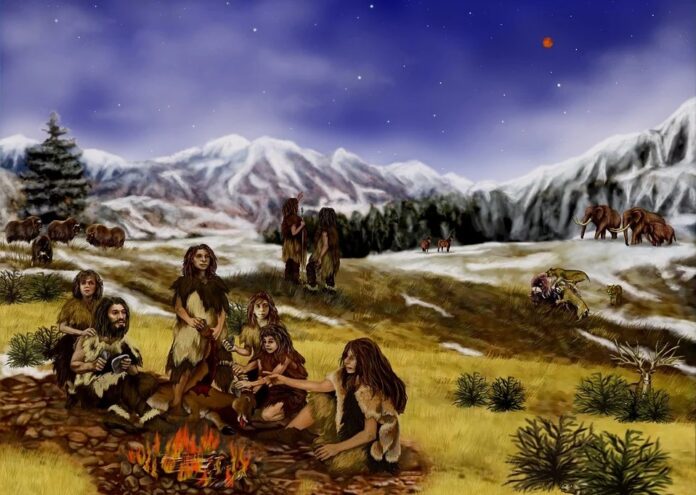The cradle of humanity is in Africa. And it was there that our distant ancestors began the journey that led humans to spread throughout the world. It was a long journey, which began almost two million years ago and ended a little less than a hundred thousand years ago, when the first men of our species set out and spread first through Asia, then through Europe and finally through America, to the one that arrived ‘only’ about 20,000 years ago.
In reality, the long march of man to populate the world did not take place all at once, but was distributed in a series of waves, leading the different human species of each era to search for new frontiers.
Africa
As time passed, some waves overlapped others, so that the ‘travellers’ of the most ‘modern’ ones met the descendants of the oldest ones, intersecting with them and thus giving rise to a veritable gibberish of mixtures , genetic inheritance and related populations that scientists are only now beginning to resolve.
However, it is not clear whether the earliest and oldest of the departures from Africa also followed this pattern. Were there several waves of those first humans or was it a single migratory event? The issue has been the subject of debate among scientists for several decades.
Now, an international team of researchers from the United States, Israel, Australia and in which the National Museum of Natural Sciences, CSIC, has also participated, has just presented, in a study published in ‘Scientific Reports’, a vertebra from 1.5 million years ago, discovered in Israel and which shows that also the oldest human migrations from Africa to Eurasia occurred in different waves.
The first wave reached what is now the Republic of Georgia, in the Caucasus, approximately 1.8 million years ago. The second, to which the vertebra object of this study belongs, was found in Ubeidiya, in the Jordan Valley and south of the Sea of Galilee, and took place 1.5 million years ago.
Six million years of evolution
According to numerous studies, both of fossil remains and of DNA, the evolution of man began in Africa about six million years ago, when he separated from that of the rest of the apes. Then, about two million years ago, ancient humans, who were almost but not quite like us, began to migrate from Africa and spread across Eurasia, a process known to scientists as ‘Out of Africa’. from Africa).
And Ubeidiya, extensively excavated between 1965 and 1999, is precisely one of the few places where archaeological evidence of this dispersion has appeared. It is, in fact, the second oldest archaeological site outside Africa, with a rich and rare collection of extinct animals and stone tools very similar to those discovered in East African sites.
The vertebra, which was unearthed in 1966, was found by Miriam Belmaker, co-author of the study, in one of the Hebrew University’s collections. The analysis of it revealed that it was a lumbar vertebra from 1.5 million years ago, the oldest human fossil discovered in Israel.
two different waves
According to Alon Barash, from Bar Ilan University and one of the directors of the research, there is a bitter controversy about whether that migration was a single event or, on the contrary, occurred in several waves. An issue on which the Ubeidiya vertebra has shed new light. “Due to the difference in the size and shape of the Ubeidiya vertebrae and those found in the Republic of Georgia -explains the researcher- we now have unequivocal evidence for the presence of two distinct dispersal waves”.
For Ella Been, an expert in spinal evolution and co-author of the study, “The analysis we carried out shows that the ‘Ubeidiya vertebra belonged to a young individual between 6 and 12 years old, who was tall for his age. If this child had reached adulthood, he would have reached a height of over 180 cm. This ancient human is similar in size to other large hominins found in East Africa and is different from the short hominins that lived in Georgia.”.
Hominids of Africa
Two populations, then, with different physical features and who settled, 300,000 years apart, in two places, Georgia and Ubeidiya, with very different climates and characteristics. Georgia, in fact, 1.8 million years ago had a dry climate similar to that of the current African savannah, while Ubeidiya was more humid and wooded, with a climate more similar to the Mediterranean.
“SeemsWell, Barash concludes, that in the period known as the Early Pleistocene we can identify at least two species of early humans outside of Africa. Each wave of migration was that of different types of humans, in appearance and form, technique and tradition of stone tool making, and ecological niche in which they lived..
Font: Jose Manuel Nieves / ABC
Reference article: https://www.abc.es/ciencia/abci-primeros-humanos-salieron-africa-distintas-oleadas-202202021348_noticia.html#ancla_comentarios
















Add Comment